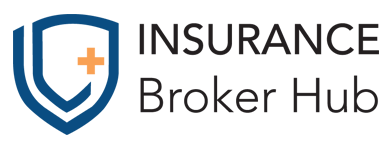The open enrollment period for the 2023 Affordable Care Act (ACA) represents the 10th anniversary of the health insurance marketplace offering policies to new enrollees. Starting in most states on November 1, 2022, and running until January 15, 2023, the open enrollment period provides Americans with the opportunity to obtain affordable health insurance they might not find elsewhere. Like other open enrollment periods, the open enrollment period for 2023 comes with several significant changes that determine how you shop for an affordable health insurance plan.
Enrollment in the health insurance marketplace has steadily increased since the program’s inception. In 2022, a record number of Americans (13.8 million) enrolled in the health insurance marketplace, of which more than 12.5 million enrollees received some type of financial incentive such as one or more subsidies. An increase in the number of subsidies, as well as an extension of the open enrollment period in 2022, came as a direct response to federal legislation to help Americans recover from the devastating economic impact of the COVID-19 pandemic. Individual enrollment in health insurance policies also reached a record high in 2022.
If the open enrollment trend continues, 2023 might produce the busiest open enrollment period since the program started. More Americans than ever are expected to renew health insurance coverage, with millions more uninsured Americans enrolling for the first time in the health insurance marketplace.
With the volume of policies rising dramatically, both new and current enrollees need to understand five important changes that should play a role in deciding what type of health insurance policy to purchase.
Increase in Unsubsidized Premiums
The average ACA unsubsidized health insurance premiums for the 50 states and the District of Columbia should increase an average of four percent during the 2023 open enrollment period. The range of benchmark premium changes runs from plus 15 percent in New Mexico to a decline of 18 percent in Virginia. Since a vast majority of enrollees receive some type of premium subsidy, most Americans reenrolling or enrolling for the first time in the health insurance marketplace should not feel the financial impact of unsubsidized premium increases.
Insurance companies point to rising prices across the board as the primary driver behind an increase in unsubsidized health insurance premiums. Inflation has significantly trimmed profit margins, which has forced insurers to ramp up premium prices.
Increase in the Value of Subsidies
Subsidies for the rapidly growing number of eligible Americans should increase in value during the 2023 open enrollment period. The American Rescue Plan Act (ARPA) became law in 2021 and its economic impact should remain strong moving into the first few months of 2023. Another influential law called the Inflation Reduction Act (IRA) guarantees the continuance of current open enrollment health insurance subsidies through at least the 2025 open enrollment period. The IRA removes the upper-income limit on subsidies, which makes millions more Americans eligible to receive financial incentives to purchase health insurance during the period of open enrollment.
End of the Family Glitch
Until the 2023 open enrollment period, more than five million Americans did not qualify for health insurance marketplace subsidies due to a quirk called the “family glitch.” The family glitch concerns Americans who receive affordable health insurance from a family member’s place of employment. Anyone who received affordable health insurance from a family member’s job did not qualify to take advantage of the subsidies offered under the ACA. New rules implemented beginning in 2023 analyze the affordability of a family member’s coverage to determine eligibility for receiving one or more subsidies. If the premium paid for a family member’s health insurance plan exceeds 9.12% of household income, each family member has the option to buy health insurance coverage through the health insurance marketplace, as well as become eligible for premium tax credits.
Additional Enrollment Support
In states that participate in the ACA-backed health insurance marketplace, residents can once again ask for help from a group called Navigators. The United States Congress has restored funding for the Navigators program after several years of substantial budget cuts. Members of Navigators receive extensive training to help enrollees navigate the process of purchasing insurance via the health insurance marketplace. Navigators especially help match enrollees with the proper subsidies, as well as provide support for enrollment in CHIP and Medicare.
Year-Round Sign Up Available for Low-Income Americans
First made available in 2022 in response to the economic devastation generated by the pandemic, Americans with an annual income of up to 150 percent of the Federal Poverty Level (FPL) have the option to enroll in the health insurance marketplace at any time during the calendar year. Although low-income Americans have more flexibility when it comes to when they can enroll, they should work hard to get it done during the open enrolment period to receive health insurance coverage throughout the entire 12-month eligibility period.
Open Enrollment 2023: The Bottom Line
If you plan to purchase a health insurance plan through the ACA-sponsored open marketplace, you should act with a sense of urgency and sign up for a policy before December 15, 2022. If you wait until after December 15, 2022, you might experience a gap in coverage between January 1, 2023, and February 1, 2023. We recommend price shopping to find a health insurance policy that fits within your budget. You can get quotes for different policies to determine which one meets your healthcare needs, while allowing you to meet all of your other financial obligations.
Isn’t There an Easier Way?
Finding health insurance is still one of those things that is a mystery for many Americans, and navigating the maze that is healthcare.gov is rarely as easy as promised. If all this sounds confusing, we haven’t even gotten into the nuances that go into each state’s requirements for essential health benefits and the application process.
Don’t you wish there was an easier way?
Because there is. If you miss the idea of corporate open enrollment, having a qualified and knowledgeable health insurance broker walk you through your options at no cost to you, fret not. You can still get the assistance you need at no cost to you.
Our free service gives you access to an independent network of national brokers who have the experience and expertise to design a plan around your needs and budget. Our network of brokers will tailor a complete solution for your health coverage needs.
Ready to get started? Simply request a no obligation health insurance quote here.


